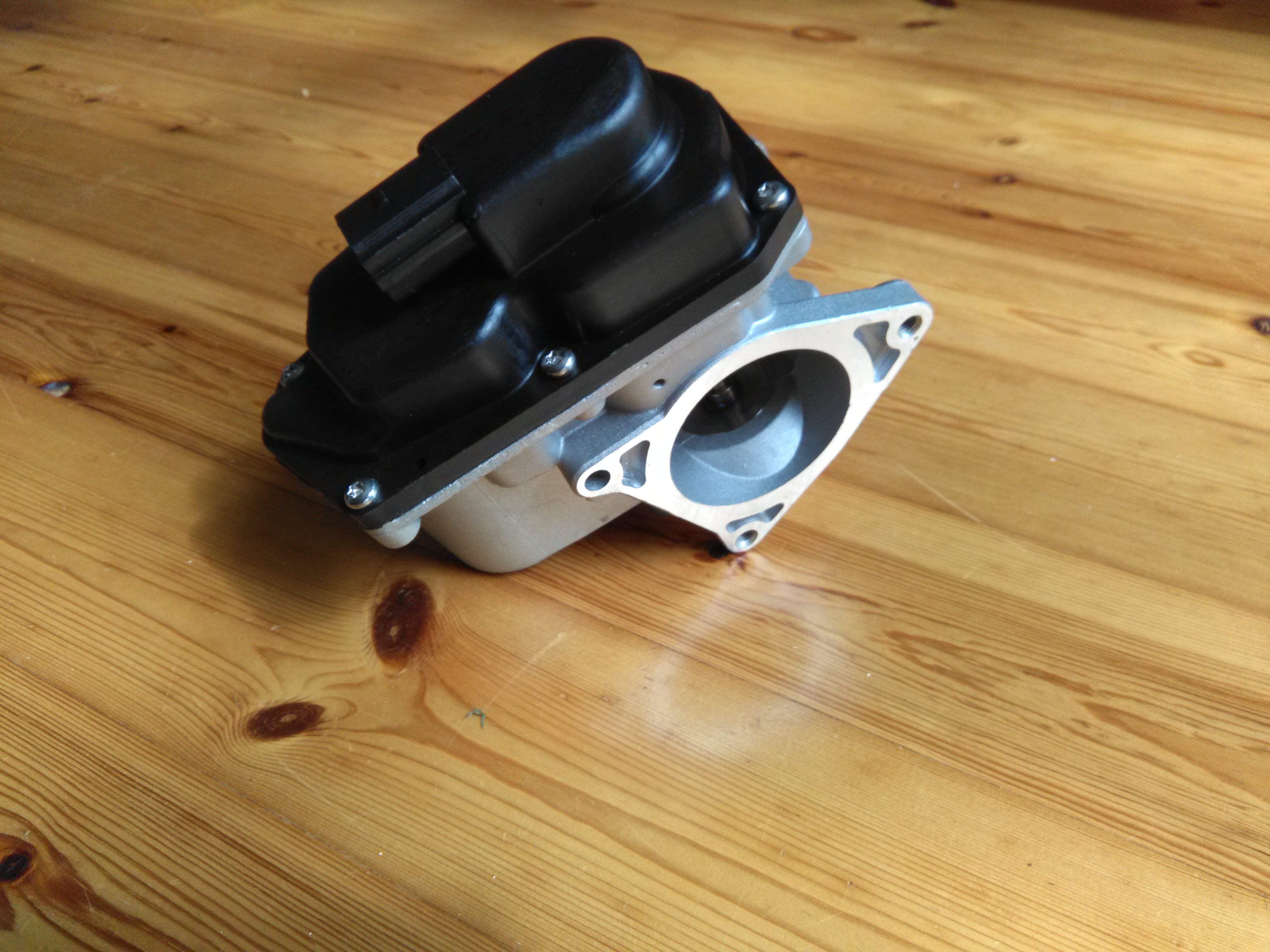|
Intel 8061
The Intel 8061 microcontroller is most notable for its use in the Ford EEC-IV automotive engine control unit. A close relative of the 8096, the Intel 8061 is second-sourced by Toshiba (under the model number 6127 and 6126) and Motorola (now Freescale Semiconductor). Introduction The MCS-96 family originated as a commercial derivative of the Intel 8061, the first processor in the Ford EEC-IV engine controller family. Differences between the 8061 and the 8096 include the memory interface bus, the 8061's M-Bus being a 'burst-mode' bus requiring a tracking program counter in the memory devices. There were also considerable differences in the I/O peripherals of the two parts - the 8061 had 8 HSI (pulse-measurement) inputs, 10 HSO (pulse-generation) outputs entirely separated from the HSI pins, and a non-sampling 10-bit ADC with more channels than the 8096 had. Many differences between the EEC-IV and the 8096 resulted from an effort to share pins to reduce I/O pin count in favor of ... [...More Info...] [...Related Items...] OR: [Wikipedia] [Google] [Baidu] |
Microcontroller
A microcontroller (MCU for ''microcontroller unit'', often also MC, UC, or μC) is a small computer on a single VLSI integrated circuit (IC) chip. A microcontroller contains one or more CPUs ( processor cores) along with memory and programmable input/output peripherals. Program memory in the form of ferroelectric RAM, NOR flash or OTP ROM is also often included on chip, as well as a small amount of RAM. Microcontrollers are designed for embedded applications, in contrast to the microprocessors used in personal computers or other general purpose applications consisting of various discrete chips. In modern terminology, a microcontroller is similar to, but less sophisticated than, a system on a chip (SoC). An SoC may connect the external microcontroller chips as the motherboard components, but an SoC usually integrates the advanced peripherals like graphics processing unit (GPU) and Wi-Fi interface controller as its internal microcontroller unit circuits. Microcontrollers ... [...More Info...] [...Related Items...] OR: [Wikipedia] [Google] [Baidu] |
Ford Motor Company
Ford Motor Company (commonly known as Ford) is an American multinational automobile manufacturer headquartered in Dearborn, Michigan, United States. It was founded by Henry Ford and incorporated on June 16, 1903. The company sells automobiles and commercial vehicles under the Ford brand, and luxury cars under its Lincoln luxury brand. Ford also owns Brazilian SUV manufacturer Troller, an 8% stake in Aston Martin of the United Kingdom and a 32% stake in China's Jiangling Motors. It also has joint ventures in China ( Changan Ford), Taiwan ( Ford Lio Ho), Thailand ( AutoAlliance Thailand), and Turkey ( Ford Otosan). The company is listed on the New York Stock Exchange and is controlled by the Ford family; they have minority ownership but the majority of the voting power. Ford introduced methods for large-scale manufacturing of cars and large-scale management of an industrial workforce using elaborately engineered manufacturing sequences typified by moving assembly lines; by ... [...More Info...] [...Related Items...] OR: [Wikipedia] [Google] [Baidu] |
Ford EEC IV
The Ford EEC or Electronic Engine Control is a series of ECU (or Engine Control Unit) that was designed and built by Ford Motor Company. The first system, EEC I, used processors and components developed by Toshiba in 1973. It began production in 1974, and went into mass production in 1975. It subsequently went through several model iterations. EEC I and II The EEC I and EEC II modules used a common processor and memory so they can be described together. The microprocessor was a 12-bit central processing unit manufactured by Toshiba, the TLCS-12, which began development in 1971 and was completed in 1973. It was a 32mm² chip with about 2,800 silicon gates, manufactured on a 6 µm process. The system's semiconductor memory included 512-bit RAM, 2 kb ROM and 2kb EPROM. The system began production in 1974, and went into mass production in 1975. EEC-III This system was used on certain 1981-83 vehicles. There were two different EEC-III modules; one for use with a feedb ... [...More Info...] [...Related Items...] OR: [Wikipedia] [Google] [Baidu] |
Engine Control Unit
An engine control unit (ECU), also commonly called an engine control module (ECM), is a type of electronic control unit that controls a series of actuators on an internal combustion engine to ensure optimal engine performance. It does this by reading values from a multitude of sensors within the engine bay, interpreting the data using multidimensional performance maps (called lookup tables), and adjusting the engine actuators. Before ECUs, air–fuel mixture, ignition timing, and idle speed were mechanically set and dynamically controlled by mechanical and pneumatic means. If the ECU has control over the fuel lines, then it is referred to as an electronic engine management system (EEMS). The fuel injection system has the major role of controlling the engine's fuel supply. The whole mechanism of the EEMS is controlled by a stack of sensors and actuators. Workings Control of air–fuel ratio Most modern engines use some type of fuel injection to deliver fuel to the cylind ... [...More Info...] [...Related Items...] OR: [Wikipedia] [Google] [Baidu] |
Intel MCS 96
The Intel MCS-96 is a family of microcontrollers (MCU) commonly used in embedded systems. The family is often referred to as the 8xC196 family, or 80196, the most popular MCU in the family. These MCUs are commonly used in hard disk drives, modems, printers, pattern recognition and motor control. In 2007, Intel announced the discontinuance of the entire MCS-96 family of microcontrollers. Intel noted that "There are no direct replacements for these components and a redesign will most likely be necessary." History The MCS-96 family originated as a commercial derivative of the Intel 8061, the first processor in the Ford EEC-IV engine controller family. Differences between the 8061 and the 8096 include the memory interface bus, the 8061's M-Bus being a 'burst-mode' bus requiring a tracking program counter in the memory devices. There were also considerable differences in the I/O peripherals of the two parts – the 8061 had 8 HSI (pulse-measurement) inputs, 10 HSO (pulse-generation) ... [...More Info...] [...Related Items...] OR: [Wikipedia] [Google] [Baidu] |
Toshiba
, commonly known as Toshiba and stylized as TOSHIBA, is a Japanese multinational conglomerate corporation headquartered in Minato, Tokyo, Japan. Its diversified products and services include power, industrial and social infrastructure systems, elevators and escalators, electronic components, semiconductors, hard disk drives (HDD), printers, batteries, lighting, as well as IT solutions such as quantum cryptography which has been in development at Cambridge Research Laboratory, Toshiba Europe, located in the United Kingdom, now being commercialised. It was one of the biggest manufacturers of personal computers, consumer electronics, home appliances, and medical equipment. As a semiconductor company and the inventor of flash memory, Toshiba had been one of the top 10 in the chip industry until its flash memory unit was spun off as Toshiba Memory, later Kioxia, in the late 2010s. The Toshiba name is derived from its former name, Tokyo Shibaura Denki K.K. (Tokyo Shibaura Electr ... [...More Info...] [...Related Items...] OR: [Wikipedia] [Google] [Baidu] |
Motorola
Motorola, Inc. () was an American multinational telecommunications company based in Schaumburg, Illinois, United States. After having lost $4.3 billion from 2007 to 2009, the company split into two independent public companies, Motorola Mobility and Motorola Solutions on January 4, 2011. Motorola Solutions is the legal successor to Motorola, Inc., as the reorganization was structured with Motorola Mobility being spun off. Motorola Mobility was acquired by Lenovo in 2014. Motorola designed and sold wireless network equipment such as cellular transmission base stations and signal amplifiers. Motorola's home and broadcast network products included set-top boxes, digital video recorders, and network equipment used to enable video broadcasting, computer telephony, and high-definition television. Its business and government customers consisted mainly of wireless voice and broadband systems (used to build private networks), and, public safety communications systems like Astro an ... [...More Info...] [...Related Items...] OR: [Wikipedia] [Google] [Baidu] |
Freescale Semiconductor
Freescale Semiconductor, Inc. was an American semiconductor manufacturer. It was created by the divestiture of the Semiconductor Products Sector of Motorola in 2004. Freescale focused their integrated circuit products on the automotive, embedded and communications markets. It was bought by a private investor group in 2006, and subsequently merged into NXP Semiconductors in 2015. History As of 2003, Motorola Semiconductor Products Sector earned US$5.0 billion in semiconductor sales in 2002 (out of US$27 billion sales for all of Motorola). Motorola announced that their semiconductor division would be divested on October 6, 2003, to create Freescale. Freescale completed its Initial public offering (IPO) on July 16, 2004, at a price of US$13. In its announcement, it estimated the stock price to be US$17.50- 19.50 but following a cooling of the market towards tech stocks, it lowered its price to US$13. Existing shareholders of Motorola stock received 0.110415 shares of Freescal ... [...More Info...] [...Related Items...] OR: [Wikipedia] [Google] [Baidu] |
Ford EEC
The Ford EEC or Electronic Engine Control is a series of ECU (or Engine Control Unit) that was designed and built by Ford Motor Company. The first system, EEC I, used processors and components developed by Toshiba in 1973. It began production in 1974, and went into mass production in 1975. It subsequently went through several model iterations. EEC I and II The EEC I and EEC II modules used a common processor and memory so they can be described together. The microprocessor was a 12-bit central processing unit manufactured by Toshiba, the TLCS-12, which began development in 1971 and was completed in 1973. It was a 32mm² chip with about 2,800 silicon gates, manufactured on a 6 µm process. The system's semiconductor memory included 512-bit RAM, 2 kb ROM and 2kb EPROM. The system began production in 1974, and went into mass production in 1975. EEC-III This system was used on certain 1981-83 vehicles. There were two different EEC-III modules; one for use with ... [...More Info...] [...Related Items...] OR: [Wikipedia] [Google] [Baidu] |
Intel MCS-96
The Intel MCS-96 is a family of microcontrollers (MCU) commonly used in embedded systems. The family is often referred to as the 8xC196 family, or 80196, the most popular MCU in the family. These MCUs are commonly used in hard disk drives, modems, printers, pattern recognition and motor control. In 2007, Intel announced the discontinuance of the entire MCS-96 family of microcontrollers. Intel noted that "There are no direct replacements for these components and a redesign will most likely be necessary." History The MCS-96 family originated as a commercial derivative of the Intel 8061, the first processor in the Ford EEC-IV engine controller family. Differences between the 8061 and the 8096 include the memory interface bus, the 8061's M-Bus being a 'burst-mode' bus requiring a tracking program counter in the memory devices. There were also considerable differences in the I/O peripherals of the two parts – the 8061 had 8 HSI (pulse-measurement) inputs, 10 HSO (pulse-generation ... [...More Info...] [...Related Items...] OR: [Wikipedia] [Google] [Baidu] |
Exhaust Gas Recirculation
In internal combustion engines, exhaust gas recirculation (EGR) is a nitrogen oxide () emissions reduction technique used in petrol/gasoline, diesel engines and some hydrogen engines. EGR works by recirculating a portion of an engine's exhaust gas back to the engine cylinders. The exhaust gas displaces atmospheric air and reduces in the combustion chamber. Reducing the amount of oxygen reduces the amount of fuel that can burn in the cylinder thereby reducing peak in-cylinder temperatures. The actual amount of recirculated exhaust gas varies with the engine operating parameters. In the combustion cylinder, is produced by high-temperature mixtures of atmospheric nitrogen and oxygen, and this usually occurs at cylinder peak pressure. In a spark-ignition engine, an ancillary benefit of recirculating exhaust gases via an external EGR valve is an increase in efficiency, as charge dilution allows a larger throttle position and reduces associated pumping losses. Mazda's turbocharged ... [...More Info...] [...Related Items...] OR: [Wikipedia] [Google] [Baidu] |






